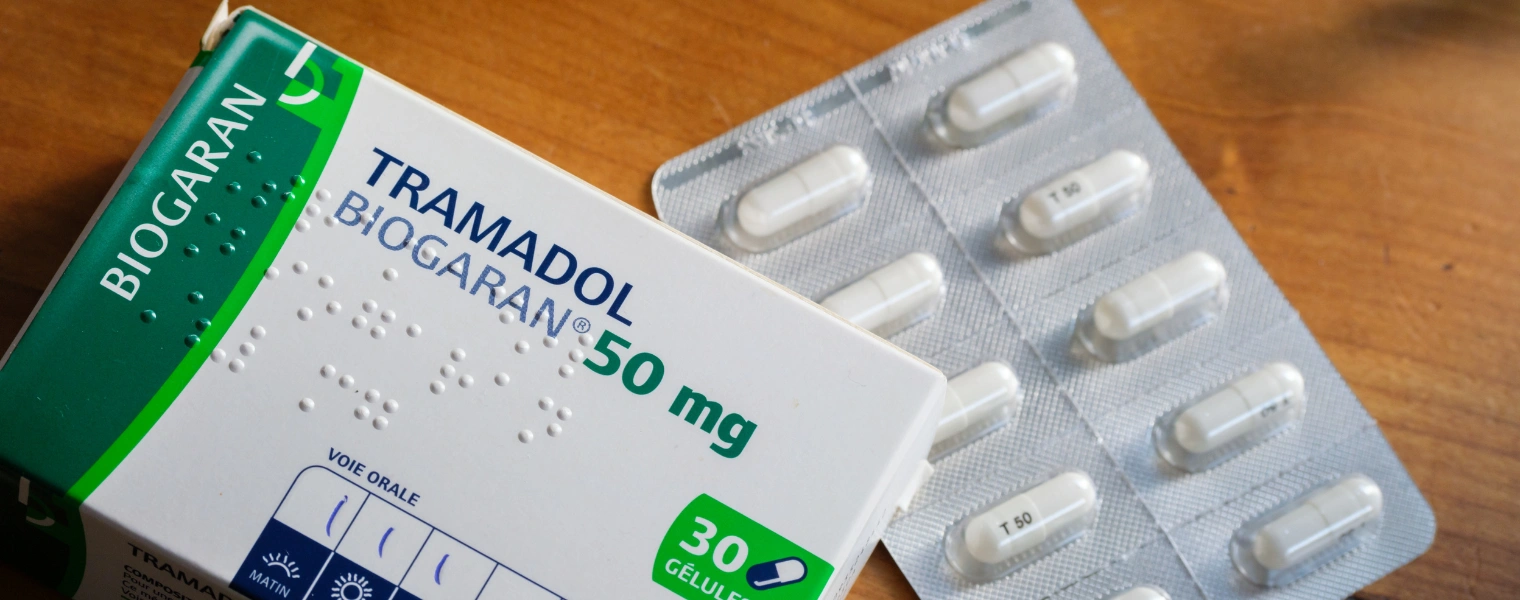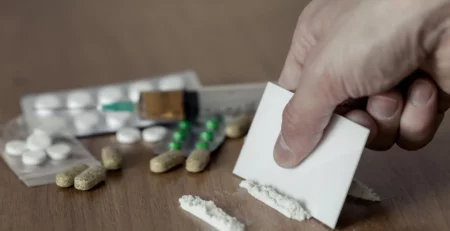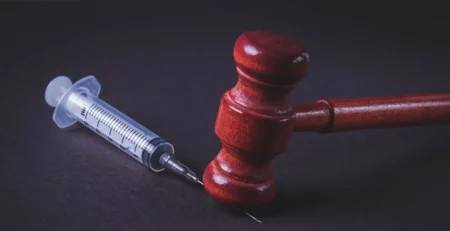Is Ultram Addictive?
Ultram (Tramadol) Addiction Signs, Symptoms, Effects, And Treatment
Ultram is often prescribed for chronic pain because it has fewer adverse effects than stronger opioid drugs on the market today. The problem is that many people don’t take it as prescribed, but this could be a dangerous situation to put yourself in. Is Ultram addictive, and what should you know?
Ultram (also known as tramadol) can be addictive. Signs of dependence include going out of your way to get more through doctor shopping or illegal means, damaging your relationships and career, and the experience of withdrawal symptoms when you try to quit. Addiction treatment is possible for tramadol dependence.
Icarus in Nevada offers a robust treatment team that has experience with opioids and their withdrawal symptoms. We can help you get sober and stay that way. Keep reading to learn about what you can expect from an Ultram addiction.
Know the Warning Signs of Ultram Abuse and Addiction

Because Ultram isn’t as powerful as some of the other opioid drugs, it’s a mistake to think that taking it not as prescribed comes without risk. Your central nervous system can develop a dependence on this drug regardless of strength. Here’s what you need to know about the warning signs of substance abuse.
Signs of Tramadol Dependence
Tramadol addiction can start out slowly, but you may eventually realize that you are dependent on the drug to function in your day-to-day life. Physical dependence is one of the most concerning symptoms, forcing you to take more tramadol as one dosage wears off. If you can’t function without it, it’s time to seek addiction treatment.
How do you know that you’re dependent on the drug?
The first sign of addiction is that it disrupts your ability to live your life. Relationships with friends and family often take a backseat to drug abuse, and serious rifts can develop in your relationships. It may also put your job in jeopardy. Regardless of the risks, you continue using.
Another sign is that you want to quit but find it impossible to do so. You may go through some of the more serious tramadol withdrawal symptoms and experience intense cravings when you try to stop using the substance.
You may also go doctor shopping to try to obtain more pills or try to source them through illegal means.
Get Effective Detox and Rehab Options at Icarus
Tramadol Withdrawal Symptoms
Tramadol abuse is notoriously tricky to treat because people going through withdrawal will have a two-pronged battle to face. They’ll go through all of the same withdrawal symptoms as someone who may be addicted to opioids. However, they may also go through serotonin syndrome.
Opioid Withdrawal Symptoms: How is Tramadol Like Other Drugs?

When you start to address physical dependence on opioids, it’s important to understand what you may go through when you stop.
Tramadol does activate the opioid receptors in the brain, which can cause some pretty uncomfortable symptoms such as:
- Anxiety and restlessness
- Insomnia
- Body aches and pains
- Sweating
- Runny nose and teary eyes
- Chills
- Stomach cramps, nausea, and diarrhea
- Respiratory depression
On their own, these symptoms are uncomfortable but rarely fatal. The issue is whether you have been taking tramadol at higher doses. If you were taking more than 400 mg per day, then you run the risk of more serious withdrawal symptoms such as seizures.
This is why it can be a good idea to enroll in a residential treatment center and detox program. You’ll receive treatment around the clock so that you always have medical supervision.
Serotonin Syndrome with Tramadol Abuse
Unfortunately, those uncomfortable withdrawal symptoms are only the tip of the iceberg when you start to take recovery seriously. Tramadol also interferes with the brain’s reward system and can lead to more serious issues like serotonin syndrome. You’re more likely to experience this if you take it with an SSRI or an atypical antipsychotic.
Symptoms of serotonin syndrome range from anxiety and restlessness to high fever and seizures. The difficulty in diagnosing this condition is that it can mimic some of the symptoms of opioid withdrawal.
This is why it’s so important to entrust your care to an experienced clinical team and to let them know exactly what you have been taking. Any prior substance abuse history should be revealed upon your admission.
Get Accredited Treatment Programs at Icarus – Call Now!
Withdrawal Timeline for Physical Dependence
When can you expect some of these withdrawal effects to hit you when you take this prescription pain medication? This Schedule IV controlled substance has a relatively short half-life, meaning that you will experience withdrawal symptoms faster than with some other drugs.
You’re likely to experience peak symptoms around 36 to 72 hours after your last dose unless you were taking extended-release drugs. Then, your symptoms may not peak for a little while longer.
Fortunately, this short half-life also means that your symptoms tend to peak quickly so that you can get on with the rest of your addiction treatment. Most of the time, the worst of the symptoms is over within the first week of treatment. Everyone is different, but a week is often all it takes to transition from detox to a lower level of care.
Addiction Treatment with Medical Professionals for Tramadol

If you’re going to go through withdrawal from prescription drugs, it can be helpful to enter into a detox program or a residential treatment center like that offered by Icarus Behavioral Health in Nevada. This type of treatment for your Ultram addiction is important to lay the groundwork for future sobriety.
Here are some of the things you should look for in a detox program to ensure you gain access to the experiences you truly need.
Ease Withdrawal Symptoms in Detox for Substance Abuse
Taking prescription painkillers for severe pain can leave you feeling out of sorts when you attempt to stop for the first time or the fiftieth time. Detox is a good idea because you’ll be surrounded by your treatment team of medical professionals.
They can often prescribe something with less addiction potential to treat your issue. You don’t have to live with chronic pain when you have an experienced team on your side.
When you abuse tramadol, it can also be helpful to slowly taper your use of the drug. While we work to relieve pain, we can also make your transition off the drug more gradual and less jarring. Tapering may not be right for everyone, but it can help to alleviate some of the more serious effects, like seizures.
Residential Treatment and Transition to Lower Levels of Care
From a detox program, you won’t be quite ready to return to life as you knew it before. The best way to bridge the gap is to enroll in a residential or inpatient treatment center. This allows continued access to 24/7 care and monitoring to ensure that you tolerate your treatment plan.
But inpatient doesn’t last for long. Most people graduate in thirty to ninety days, ready to move on to the next stage of their recovery journey.
Eventually, you’ll be ready to step down from this level of care, though. Look for programs that offer a lower level of care to help you transition, such as partial hospitalization or intensive outpatient, both of which you’ll find at Icarus Behavioral Health Nevada.
This permits you to practice your newfound skills in the evenings when you return home and still retain access to care during the mornings and afternoons. It’s a great stepping stone for anyone who feels they can take more freedom and personal responsibility, but still needs a container for treatment.
Access to Recovery Meetings for Accountability

Recovery meetings can help you uncover the new foundation for your life without Ultram or tramadol. Like Alcoholics Anonymous, Narcotics Anonymous follows the Twelve Step framework. The first step you’ll need to take is admitting that you have a problem with prescription pain medication.
From here, you can walk through the steps with your peers who are in a similar situation to your own.
This is a great place to make new friends who prioritize sober living and understand what it feels like to be dependent on drugs for your day-to-day responsibilities. It also provides you with accountability for your sobriety, which you might lack in friends and family members who aren’t as supportive as you may like.
Up To 100% of Rehab Costs Covered By Insurance – Call Now!
Get Firm Support in Your Corner with Icarus Nevada Today
If you find tramadol addictive, then it may be time to face your drug use head-on by enrolling in our addiction treatment program. Our medical team can assist with prolonged tramadol usage and help work with your primary care team to treat chronic pain conditions.
The best part is that our enrollment team can help you secure a spot right away with access to same-day admissions. Allow us to answer your questions and verify your insurance benefits in a quick and confidential phone call about how we can help you.
Reach out to Icarus Behavioral Health in Nevada today to learn more about our programs!
References
- U.S. Department of Health and Human Services. (2022, June 13). What are the signs of having a problem with drugs?. National Institutes of Health.
- Clinical Guidelines for Withdrawal Management and Treatment of Drug Dependence in Closed Settings. Geneva: World Health Organization; 2009. 4, Withdrawal Management. Available from:
- Aminiahidashti, H., Shafiee, S., Mousavi, S. J., & Hajiaghaei, G. (2016). Tramadol Pill Alone May Cause Serotonin Syndrome. Chinese medical journal, 129(7), 877–878.
- Pergolizzi, J. V., Jr, Raffa, R. B., & Rosenblatt, M. H. (2020). Opioid withdrawal symptoms, a consequence of chronic opioid use and opioid use disorder: Current understanding and approaches to management. Journal of clinical pharmacy and therapeutics, 45(5), 892–903.
- Dowell, D., Compton, W. M., & Giroir, B. P. (2019). Patient-Centered Reduction or Discontinuation of Long-term Opioid Analgesics: The HHS Guide for Clinicians. JAMA, 322(19), 1855–1856.











